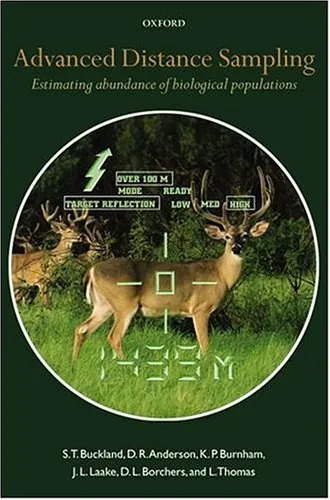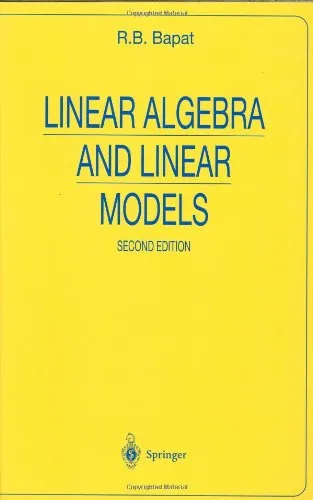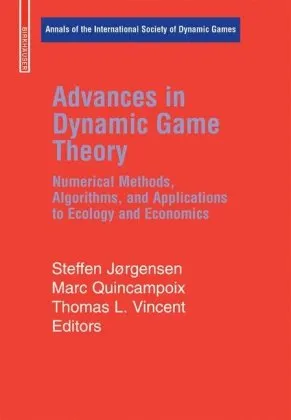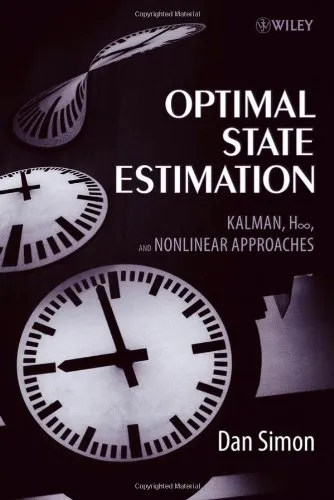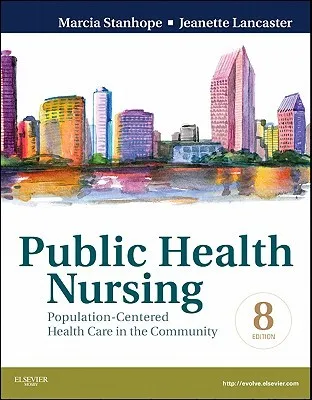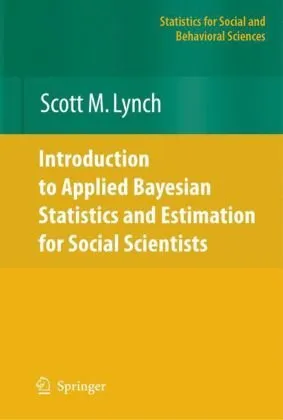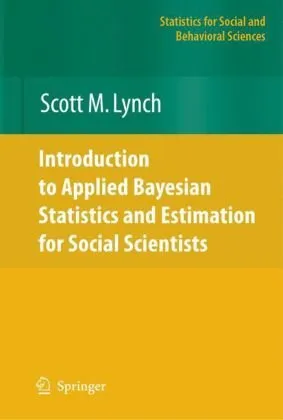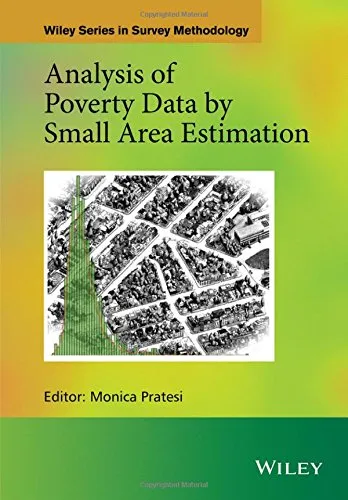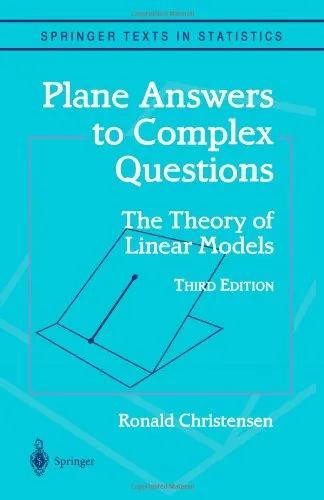Advanced Distance Sampling: Estimating Abundance of Biological Populations
4.5
بر اساس نظر کاربران

شما میتونید سوالاتتون در باره کتاب رو از هوش مصنوعیش بعد از ورود بپرسید
هر دانلود یا پرسش از هوش مصنوعی 2 امتیاز لازم دارد، برای بدست آوردن امتیاز رایگان، به صفحه ی راهنمای امتیازات سر بزنید و یک سری کار ارزشمند انجام بدینکتاب های مرتبط:
معرفی کتاب 'Advanced Distance Sampling: Estimating Abundance of Biological Populations'
کتاب 'Advanced Distance Sampling: Estimating Abundance of Biological Populations' نوشته S.T. Buckland, D.R. Anderson, K.P. Burnham, J.L. Laake, D.L. Borchers, و L. Thomas یکی از مهمترین و جامعترین منابع در زمینه Distance Sampling و روشهای تخمین abundance زیستی است. این کتاب، که ادامهای بر نسخه قبلی خود یعنی کتاب ‘Distance Sampling’ است، به عمق بیشتری از این متدولوژی پرداخته و ابزارها و تکنیکهای نوآورانهای را برای استفاده در تحقیقات زیستشناسی و بومشناسی ارائه میدهد.
خلاصهای جامع از کتاب
این کتاب با توضیح مفاهیم پایهای Distance Sampling شروع میشود و به تدریج وارد مبحثهای پیشرفتهتر مانند مدلسازی، استفاده از دادههای پیچیده و تجزیهوتحلیلهای پیشرفته میشود. در این متن، نویسندگان به بررسی تکنیکهای توسعهیافتهای که برای مدلسازی spatial استفاده میشود، پرداختهاند و در عین حال چگونگی برخورد با دادههای ناقص و وجود خطاهای تخمین در محیطهای پیچیده را توضیح دادهاند.
نویسندگان در این کتاب تأکید کردهاند که انعطافپذیری و دقت در استفاده از مدلها کلید اصلی موفقیت در تخمین abundance است. قسمتهایی از کتاب به استفاده از مدلهای Mixed Effects، تکنیکهای Linear Modeling و همچنین اَشکال مختلف طراحی Distance Sampling اختصاص یافته است. همچنین جنبههایی از نرمافزارهای مربوطه همچون Distance و R بررسی شدهاند.
این کتاب به دانشمندان و محققان کمک میکند تا از رویکردهای علمی و مبتنی بر مدل استفاده کنند و چالشهای عملی را در هنگام اجرای مطالعات میدانی بهتر درک و حل کنند. علاوه بر این، مثالهای واقعی و مطالعات موردی گنجاندهشده در متن، مفاهیم پیچیده را به صورت کاربردی و ملموس ارائه میدهد.
نکات کلیدی
- توضیح کامل اصول و مبانی Distance Sampling و کاربردهای آن در زیستشناسی جمعیت.
- بررسی تطبیقی روشهای کلاسیک و جدید در مدلسازی دادهها.
- بررسی چالشهای مربوط به دادههای ناقص و تکنیکهای مدیریتی.
- آموزش کار با نرمافزارهای تخصصی مانند Distance و R.
- مطالعات موردی واقعی برای ارائه مصادیق عملی از مفاهیم علمی مطرحشده.
جملات معروف از کتاب
"Abundance estimation is not just counting; it involves modeling, probability, and statistical precision."
"The beauty of Distance Sampling lies in its ability to provide robust estimates in an imperfect world."
چرا این کتاب اهمیت دارد؟
اهمیت این کتاب در ترکیب بینظیر اصول آماری پیشرفته و کاربردهای واقعی زیستشناسی و بومشناسی نهفته است. با رشد چالشهای زیستمحیطی و اهمیت رو به افزایش مطالعات مبتنی بر دادههای میدانی، نیاز به ابزارهایی همچون Distance Sampling دوچندان شده است. نویسندگان این کتاب با استفاده از روشهای علمی، عملی و آموزشی به محققان امکان دادهاند تا ابزارها و تکنیکهای دقیقی برای تخمین abundance حیوانات وحشی و گونههای مختلف به کار بگیرند.
این کتاب برای دانشجویان، محققان و متخصصانی که در زمینههای زیستشناسی، بومشناسی و آمار فعالیت میکنند، منبعی بیبدیل و ساختاریافته ارائه میدهد. همچنین، به دلیل پوشش کامل و عمیق موضوعات، این کتاب به عنوان مرجع استاندارد برای تدریس و یادگیری فاصلهسنجی در بسیاری از دانشگاههای جهان مورد استفاده قرار میگیرد.
Introduction to "Advanced Distance Sampling: Estimating Abundance of Biological Populations"
"Advanced Distance Sampling: Estimating Abundance of Biological Populations" is a pivotal book written by a team of renowned researchers: S.T. Buckland, D.R. Anderson, K.P. Burnham, J.L. Laake, D.L. Borchers, and L. Thomas. This book serves as a comprehensive guide for ecologists, wildlife researchers, and statisticians aiming to assess the abundance of biological populations accurately and efficiently. Building on the foundational concepts established in their earlier publications, the authors delve deeper into advanced methods, theories, and applications of distance sampling—a widely employed statistical tool used to inform environmental management and conservation efforts.
With the challenges posed by biodiversity loss, habitat degradation, and climate change, precise population density estimates have never been more critical. This book addresses these challenges by presenting detailed methodologies for designing surveys, analyzing data, and overcoming potential biases in real-world settings. It incorporates modern computational advancements, and its approachable yet detailed style ensures that both novices and seasoned professionals alike can benefit from its insights.
Detailed Summary of the Book
The book begins with an overview of distance sampling principles, highlighting the framework’s importance and its applications in conservation biology, ecological research, and wildlife management. It then progresses to more advanced topics, covering various survey designs, statistical modeling techniques, and practical challenges that researchers face during field implementation.
The authors dedicate significant attention to the importance of detecting probabilities and how they influence population estimates. The use of line transects and point transects is explored extensively, providing readers with the tools needed to determine which approach best suits their particular study. Furthermore, the text incorporates real-world examples and case studies from diverse ecological systems to offer readers practical insights and demonstrate the application of theory to practice.
Advanced statistical models like Mark-Recapture Distance Sampling (MRDS) and Hierarchical Distance Sampling (HDS) are featured, reflecting current trends in population modeling. The book also emphasizes computational solutions, particularly the use of R and specialized software like Distance, making it highly relevant to the data-intensive workflows of today’s researchers.
Each chapter provides a logical progression, complete with exercises, references for further reading, and critical discussion points that encourage readers to engage with the material deeply. This combination of practical application and theoretical rigor sets this book apart as a crucial resource in quantitative ecology.
Key Takeaways
- Comprehensive guidance on designing and analyzing distance sampling surveys.
- Detailed exploration into advanced topics such as model selection, variance estimation, and bias minimization.
- Integration of modern computational tools like R and specialized software for practical implementation.
- Practical case studies highlighting how distance sampling has been applied to real-world ecological problems.
- Insight into developing accurate population estimates as a cornerstone of conservation biology and ecological monitoring.
- Focus on the importance of probability and detection functions to ensure unbiased results.
Famous Quotes from the Book
"Effective conservation efforts must be underpinned by robust data, and distance sampling provides the foundation for reliable population estimates."
"Precision in ecological surveys is not merely a mathematical exercise; it is a critical necessity in safeguarding the natural world."
"By improving population estimation techniques today, we equip ourselves to make informed decisions for tomorrow."
Why This Book Matters
"Advanced Distance Sampling: Estimating Abundance of Biological Populations" matters because it addresses a central concern of modern ecology: how to accurately and efficiently estimate the abundance of animal populations. Given the ongoing biodiversity crisis and the urgent need for evidence-based conservation strategies, tools like distance sampling have become indispensable. This book equips researchers and practitioners with the advanced techniques they need to meet these challenges, bridging the gap between methodology and application.
Furthermore, it acknowledges the dynamic nature of ecological research by incorporating new technologies, computational techniques, and contemporary challenges into traditional statistical frameworks. Any professional involved in ecological monitoring, conservation biology, or environmental management will find this book to be an essential resource that empowers them to contribute meaningfully to the preservation of the natural world.
دانلود رایگان مستقیم
شما میتونید سوالاتتون در باره کتاب رو از هوش مصنوعیش بعد از ورود بپرسید
دسترسی به کتابها از طریق پلتفرمهای قانونی و کتابخانههای عمومی نه تنها از حقوق نویسندگان و ناشران حمایت میکند، بلکه به پایداری فرهنگ کتابخوانی نیز کمک میرساند. پیش از دانلود، لحظهای به بررسی این گزینهها فکر کنید.
این کتاب رو در پلتفرم های دیگه ببینید
WorldCat به شما کمک میکنه تا کتاب ها رو در کتابخانه های سراسر دنیا پیدا کنید
امتیازها، نظرات تخصصی و صحبت ها درباره کتاب را در Goodreads ببینید
کتابهای کمیاب یا دست دوم را در AbeBooks پیدا کنید و بخرید
